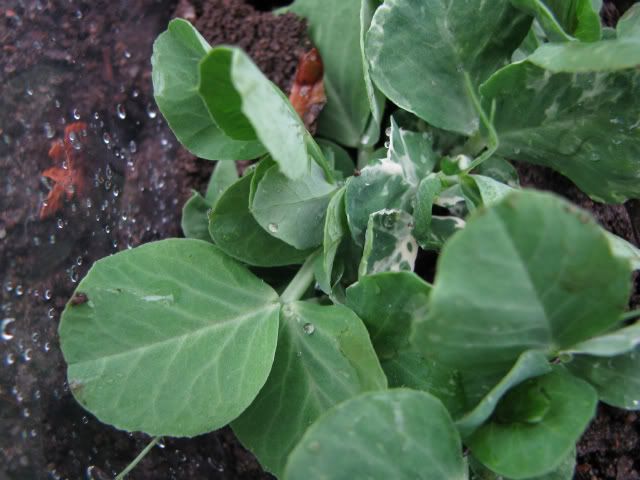|
|
Post by ottawagardener on Apr 23, 2010 11:48:10 GMT -5
Cool guys. thanks.
|
|
|
|
Post by cortona on May 4, 2010 3:42:47 GMT -5
being an oddity collector in cactus i know something about variegation, in cactus variegation can appear for basicaly two reasons: virus and genetic
if is a virus the mostly part of the time it pass away and the plants turn green again if is a genetic mutation we have a chimera (that is a plants composed of two different tissue, one green and one of different color) if in this case we want to perpetuate the variegation we are used to pollinate the flowers that arise from the nn green part because if you pliinate the flower that arise from the green part you have only green sedling.
same in daylilyes, to have the possibility of grown variegate seedling we need to have a variegate or pure yellow floral scape that can give totaly albino seedling but also some hope of variegate.
|
|
|
|
Post by ottawagardener on May 9, 2010 7:38:11 GMT -5
It will be interesting to see what happens with the seedlings from this plant. I was wondering if it was a chimera of two different tissues but have to admit that my very basic research just yielded some genes for variegation in favas or something like that. It is predominantly on the margins on one side but a bit random which gives some strength (to me) for the chimeric arguement but who knows? I have some seed pods forming - one from a chimeric node but the pod is green.
P.S. I found a variegated clover - again random pattern - in a client's garden. This, however, I can propogate vegetatively if I remember correctly.
|
|
|
|
Post by cortona on May 9, 2010 7:44:16 GMT -5
ottawagardener, if and wen you find some material can we have a swap? realy interessedin unusual and variegate veggie!!!
thanks
Emanuele
|
|
|
|
Post by ottawagardener on May 14, 2011 15:33:55 GMT -5
Update on Variegated Pea: Seedlings showing varying degrees of variegation.  Looking back at the mother plant, I see that the variegation on that was mostly one sided. The most variegated of the seedlings is mottled. Some have less. We'll see how it plays out. |
|
|
|
Post by keen101 (Biolumo / Andrew B.) on May 15, 2011 12:59:11 GMT -5
Cool. If this is the F1 generation, then please keep us informed on how the F2 generation turns out.
|
|
|
|
Post by ottawagardener on May 15, 2011 16:20:35 GMT -5
Yes, this is F1. I hope to have an F2 for next year.
|
|
|
|
Post by keen101 (Biolumo / Andrew B.) on May 26, 2011 2:34:15 GMT -5
Well, if your wondering about the genetics aspect to it i've found a little bit about it in my biology textbook. Basically it can only pass from the mother's side to it's offspring. You can think of it as plant mitochondria if you want, but i think it's actually just some malfunctioning plastids that can be inherited from the mother plants only. So, in a way it's genetics, but in a way it's not. I found a neat picture of one similar online, but it's in german. look for the one called "Skansk Graert" which i think might be a Danish name. www.ginsterfarm.ch/Pflanzen/ErbsenKefenLinsen/Erbsen.htm |
|
|
|
Post by ottawagardener on May 26, 2011 7:35:22 GMT -5
Keen: If it functioned like mitochondria wouldn't it always get the mother's plastids as they are cell dwelling organelle? I'll have to look this up. As for the F1s, not all show the same degree of variegation on the leaves. I suppose that it is only some of the plastids that are faulty as it is often mentioned that variegated peas are chimera??? If all the plastids were faulty producers of chlorophyll, I presume you'd get an albino pea and therefore a non viable one. I'll go look at that picture. Thanks.
|
|
|
|
Post by Joseph Lofthouse on May 26, 2011 10:07:55 GMT -5
You can think of it as plant mitochondria if you want, but i think it's actually just some malfunctioning plastids that can be inherited from the mother plants only. So, in a way it's genetics, but in a way it's not. I think of organelles as non-Mendelian genetics... Normally in my corn breeding I choose to propagate the non-nuclear DNA and organelles from the wilder parent (using Indian corn as the mother, and commercial corn as the pollen donors). I do this for the sake of genetic diversity, and also to get away from the bad habit commercial seed growers have of using plants with defective organelles. |
|
|
|
Post by sophgoldy on Oct 17, 2020 3:31:57 GMT -5
Did anything further ever come from this? Variegated f2 seedlings? If anyone knows that would be delightful because I have this lovely surprise pea growing with a lot of variegation. Not sure how to post pics this is my first comment on anything here!
|
|
|
|
Post by xdrix on Oct 17, 2020 13:47:18 GMT -5
Welcome,
Here is a very good forum with a lot of informations.
For posted a picture you must use a picture host.
|
|